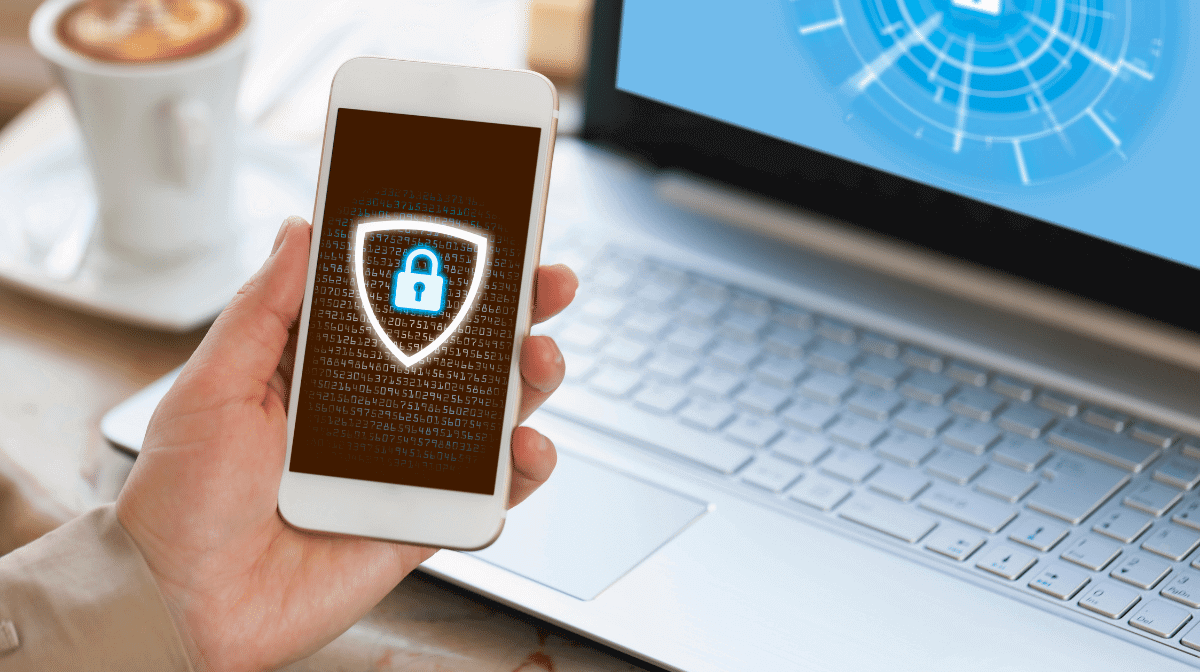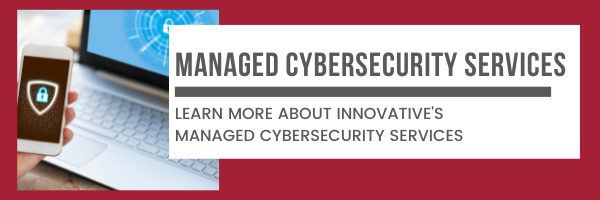Important Cybersecurity Questions You Should Ask Your Business
It’s another week at Innovative, and I’m continuing to learn the ins and outs of a managed service provider. That feeling of being on a different planet is slowly starting to fade away. Am I an expert yet? Absolutely not. But hey, it’s progress.
My most recent learning experience came in the form of a training session on cybersecurity packages. This stuff can be pretty daunting when you first dive into it. EDR, SOC/SIEM, MFA – what does any of this mean?
You might be feeling the same way. You want to protect yourself and your business, but this is a language you don’t speak. Take it from me, though – You can learn this!
Let’s walk through some of the key points of this meeting, so we can both make some sense of it. I think you’ll walk away feeling like you’ve learned something.
Threats are Evolving
One key takeaway I had from this training is that cyber threats are always evolving. You need to have the latest security measures in place not just for the good of your business, but so that you can qualify for cybersecurity insurance.
This part stood out to me because I had never known that there was even such a thing as cybersecurity insurance – but it makes a lot of sense. We generally think of insuring our cars and houses, but our network infrastructure and data also need insuring.
Similar to how a poor driving record can raise your car insurance rate or disqualify you from insurance entirely, there are certain qualifications to be eligible for cybersecurity insurance.
Here are a few compliance/insurance questions that might be asked of a client.
- Do you have the most up-to-date anti-virus solution?
- Do you require Multi-Factor Authentication (MFA) to access the company’s network?
- Do you have a Virtual Private Network (VPN) or equivalent technology?
- Do you have a Managed Detection and Response (MDR) or Security Information and Event Management (SIEM) system?
If you check yes on those four boxes, you’re already taking important steps to protect your network. That isn’t an exhaustive list, but it’s a start.
Endpoint Detection and Response
So now you might be wondering why those questions are important. Let’s start with the first one. The simple answer is that you need the most up-to-date anti-virus solution because threats are always evolving.
It can’t be overstated. The people coming for your data and info are always trying to stay one step ahead.
Old-school, signature-based anti-virus software isn’t going to cut it anymore. You can’t just buy a CD from the store and install it on your computer. You need to protect your network with an Endpoint Detection and Response (EDR) system.
EDR is an upgrade over standard anti-virus because it detects known threats and suspicious-looking files or programs that behave like a threat. It also responds to those threats in a more sophisticated way.
Essentially, standard anti-virus is like a checklist, and EDR is like a functioning brain.
Managed Detection and Response
One of the best ways to counter threats is an MDR (Managed Detection and Response) that includes a 24/7 Security Operations Center (SOC). That’s a lot of letters, I know.
MDR is a cybersecurity service that combines technology and human expertise to seek out, monitor and respond to threats.
What MDR does is give you 24/7 protection through a SOC, which is a dedicated staff combing through your network and looking for threats.
A good MDR includes multiple layers of security including:
- 24/7/365 SOC with remediation capabilities.
- Multiple EDRs.
- Cloud and email monitoring.
- Threat analytics.
Innovative recommends a multi-EDR MDR solution for one simple reason: the more layers, the better. Having more than one EDR solution increases your chances of catching threats. If one solution misses the threat, the other will likely catch it.
While the multi-EDR keeps an eye on your endpoints, you should have cloud monitoring to keep watch over your network’s cloud services. These services include but are not limited to Microsoft365, Google Workspace and Dropbox.
The last function of MDR that we’ll talk about is threat analytics. Your endpoints and cloud are protected, now it’s time to look for suspicious activity.
Threat analytics looks for things like login times, odd remote login locations, account creations or deletions, admin role elevation or removals, 2FA changes, etc.
2FA
Next is MFA, or Two-Factor Authentication (2FA). This one is pretty simple. When you log in to your business’s network with your credentials, a second prompt will appear asking you to confirm your login through a text, phone call or push notification through a third-party app.
What this does is provide an extra layer of protection against cyber breaches. According to the Verizon Data Breach Investigations Report, “81 percent of hacking-related breaches leveraged stolen and/or weak passwords.” In the event a password gets stolen, MFA will make it more difficult for the attacker to gain access.
VPN
VPN is another term that might sound confusing, but on its surface is actually pretty simple. When a VPN is used for business, it’s generally to allow employees remote access to data or software that is only available on an internal network.
It does this by creating a tunnel from your device to the network you’re accessing while encrypting the data sent to your device so it’s secure.
By keeping that data on one network, it stays protected. Third parties can’t access it from outside the network.
Password Manager
That covers some of the general info when it comes to cybersecurity compliance. Let’s talk a little bit more about passwords with an app called MyGlue.
MyGlue is a password manager that makes it easier to keep track of all your passwords while still ensuring they are complex and up to standard.
We all have countless things to log in to on a daily basis. If you want all those passwords to be as long and as complex as they need to be, it would be impossible to put them all to memory.
Sure, there are ways you can keep track of all these passwords, but the last thing you want to do is write them down or store them in a spreadsheet on your computer.
MyGlue allows you to store all your passwords under one login. A service like this is invaluable to a person or business. Passwords are the first line of defense when keeping your data secure, so you want to make sure all those passwords are different.
Having one password for all your accounts would make it easy for attackers. The more passwords, the better.
Make Sure You Protect Your Network
If you’re going to walk away from this article knowing one thing, it should be that cybersecurity is critical. Not everyone is going to be an expert on this stuff. I’m still learning, myself.
The more you know about cybersecurity, though, the better prepared you’ll be when deciding how to protect your business. I’m sure your office doors get locked every night – It’s time to do the same with your data.




